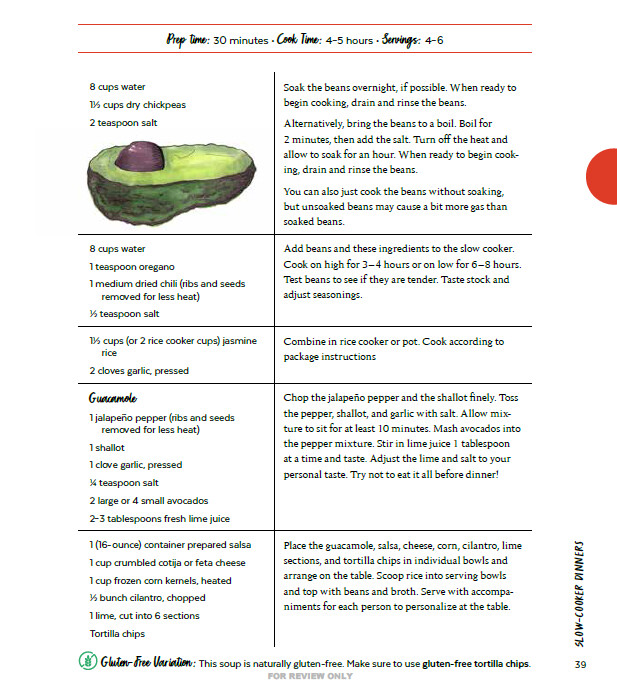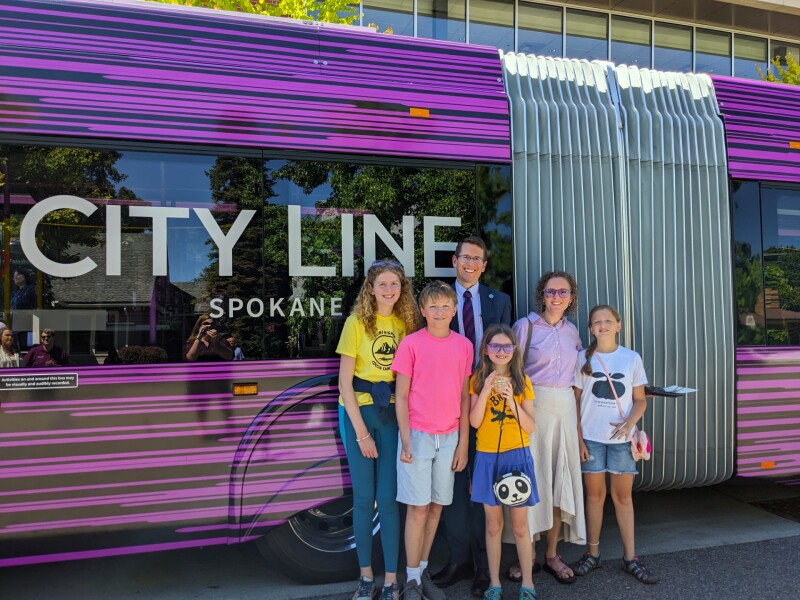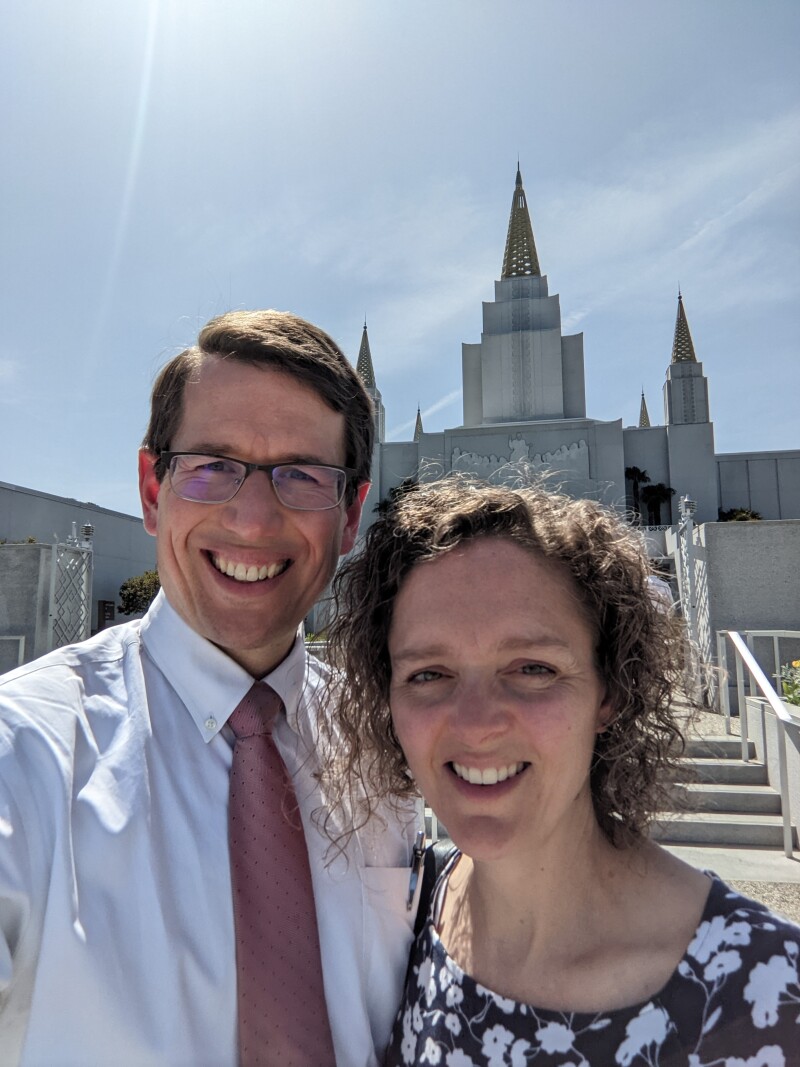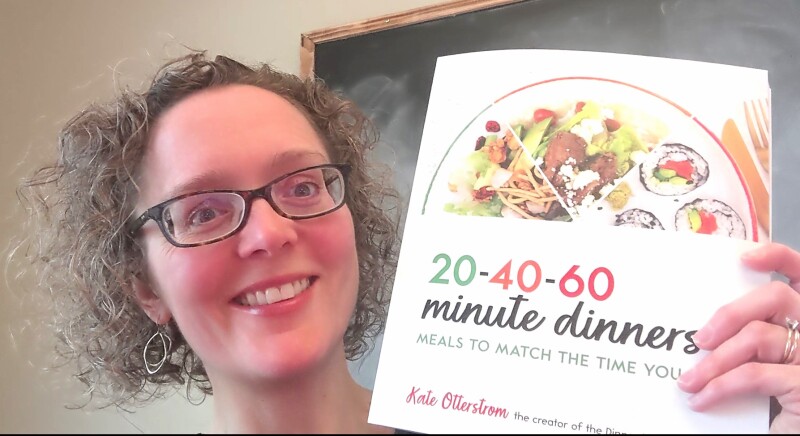The homemade pizzas were disgusting—there was no way around it. For most people, this wouldn’t be a cause for crisis; they would simply chalk it up to a failed recipe, failed execution, or both, and move on with their day. But for Latter-day Saint Kate Otterstrom, mediocre pizzas were a Big Deal.
It was 2017, and she had just spent six years working on her “passion project”: a cookbook filled with tried-and-true favorites from her life as a foodie and a busy mom.
She was incredibly proud of it; she had, after all, been scribbling down recipes since high school. Notebook after notebook was filled with scrawled notes about which recipes were her favorites and how she could present them in the clearest way possible.
She had toiled for years, using her husband and four children—and sometimes unsuspecting friends who had been invited over for dinner—as her recipe testers. Now the cookbook was mostly done. All it needed were a few finishing touches and then Kate was ready to shop it around to publishers.
And then an unexpected diagnosis made it seem like it might be all for nothing. Celiac disease, an autoimmune illness caused by a reaction to ingesting gluten, was discovered to be the culprit for health problems Kate had been experiencing off and on her whole life.
Suddenly, her beloved cookbook felt like the enemy; just about everything in it—and everything she enjoyed eating—contained gluten. Homemade noodle soup, her grandmother’s famous almond Texas sheet cake, and yes, her signature pizza crust were all off-limits for someone with Celiac disease.
Kate’s heart sank. Did she just spend a chunk of her life producing a cookbook that she wouldn’t even be able to use? For years, her mind had been trained on this being one of her contributions to the world. And while it was close to completion, she knew she wanted to include gluten-free recipes so it would feel authentic to her. But did she have it in her to go back and redo the whole thing?
By herself, no. But with the Spirit of the Lord by her side, yes.
“I didn’t get a major revelation where I felt like the Spirit told me to write a cookbook,” she says. “It just was something I kind of wanted to do and I felt like I could make a contribution with, and so that was enough. And then I was able to receive inspiration as I went along.”

Cooking Up the Idea
Kate’s love affair with food—creating it, displaying it, and eating it—began as a child in Snohomish, Washington, when she watched her parents host and attend monthly dinner parties with three other couples.
“Everybody would dress up,” Kate remembers. “It was like, china, silver, [with] Gourmet Magazine or Julia Child recipes. They were definitely fancy dinners.”
Occasionally, the kids (each couple had two) would be invited to join. And decades later, this group of friends—who simply call themselves “The Dinner Group” and now includes three generations—has become like family.
“From the planning and cooking of the Dinner Group dinners, Kate discovered the art of cooking new recipes and the satisfaction of tasting the results,” says her mother, Susan Cedergreen.
Kate agrees.
“Food and appreciation of food and talking about food was always a big part of my growing up,” she says. “I always enjoyed it.”
Once she left for college, Kate continued experimenting with recipes and keeping careful track of her favorites, feeding friends and roommates even as she majored in zoology and became a research scientist. Never one to rest on her laurels, two years into her new career, she decided to pivot by enrolling in law school.
It was during her years at law school at Seattle University that she met her future husband, fellow graduate student Karl Otterstrom. She remembers squeezing in time for special dates by meeting him on campus and heating up canned clam chowder in a break room’s microwave. He reciprocated by bringing her cookies in the library. They were married in the Seattle Washington Temple in 2005.
Kate put her burgeoning career as a lawyer on hold in 2007 when her first child, Inge, was born. It was at that time when Kate—fresh out of the workforce and looking for ways to stretch herself and connect with others—decided to start blogging.
Her blog, “At Home with Inge,” was a place where she could share the everyday goings-on of her young family and also hone her chops in the kitchen by developing and sharing recipes.
It was through writing her blog that she first had the idea for a cookbook that would be like a “handbook in the kitchen—something that could be very useful,” says Kate. She came up with a unique way of presenting recipes using a table format, so cooks could follow along with the specific directions listed next to their set of ingredients instead of constantly having to find their place in the recipe.

And she included helpful guides, like essential equipment for a smoothly functioning kitchen, and conversation starters for when family and friends are sitting around the table.
All the while, the years ticked by. She, Karl, and Inge moved to Spokane, Washington, where three more children were born. Several years of “intense mom-ing” followed, Kate says.

The cookbook “was one of those things that a lot of people heard me talk about over the years, and I think that many people thought, ‘That’s not going to happen’,” Kate says. “It was so long in coming.”
Nothing Half-Baked
When the curveball of her celiac diagnosis came in 2017, Kate was at first taken aback. She had always had stomach aches as a child, “but, you know, it was the ‘80s,” she says with a laugh. No one thought much of it.
“Before I got diagnosed with celiac disease, I was a little skeptical about food allergies, like thinking, ‘Oh, does it really matter that much?’” Kate says. Now she knows: “It does!”
The first few months after her diagnosis were like a “honeymoon phase,” she says, because she felt so much better without gluten that she didn’t mind the upheaval it had caused to her diet.
But then the honeymoon phase wore off, and she had to get down to the nitty-gritty of how she was going to feed her family and herself in a way that would be cost-effective, doable, and delicious.
There are gluten-free flours and ready-made products for those with gluten intolerance, but many of them didn’t appeal to Kate and her lifestyle, because “they’re sad and they’re expensive,” she says.
So she got to work. Kate experimented with making her own blends of gluten-free flours (cue the disgusting pizza crusts) until she found one that delivered the fluffy, chewy results she wanted (the secret: garbanzo flour!).
“When I finally got pizza right, that was kind of the heavens-breaking-open-and-the-angels-singing kind of moment,” she says.
Next, she needed to decide what to do about her cookbook. She had poured her heart and soul into it for the past several years, but was it worth pursuing if she couldn’t even use it herself?
Abandoning the project felt tempting.
“There were plenty of times when I just didn’t want to finish it because it just felt like this morass of a project that was never going to be finished,” says Kate.
Luckily, she doesn’t know when to quit.
“Kate leaves nothing half-baked,” quips Karl. “The reach for a long-term goal in which there are no visible external forces compelling forward movement is a testament to her drive and discipline.”

One by one, Kate started going through the recipes in her cookbook, painstakingly adding optional gluten-free variations to almost every single one. Some recipes lent themselves easily to a gluten-free diet (Brazilian stew and cheese rolls, Karl’s favorite), while others presented more of a challenge (chocolate angel food cake).
Through the hours and hours of revisions—which turned into years as she juggled the demands of life and her young family—Kate persisted with faith.
“The power of covenants—they are real,” Kate says. “I think for a while, I kind of would think, ‘Yeah, I can power through, I can do the hard things by myself.’ But then as the things got harder, I started relying more on doing the hard things with the power of the covenants that I’d made with God.”
“Kate’s determination to stay bound to her Savior Jesus Christ is demonstrated daily,” says Karl. “I think the results of that daily effort speak for themselves, in how she treats others, pursues any task, and the way she treasures the testimony that is hers.”
But it wasn’t until 2021, after her grandmother passed away, that Kate fully committed to seeing the publication of her book through to the end. She recalled the many times her grandmother had asked about the status of the cookbook over the years.
“I kind of felt like it was a thing that I almost wanted to follow through so that I didn’t let her down,” says Kate.
She found a publisher and then got to work with the visual side of the cookbook. Her oldest daughter, Inge, made whimsical illustrations to go along with several recipes, and Kate’s mom, Susan, came to visit for two weeks so she and Kate could cook every recipe in the book and take photos of each one. The amount of dishes she had to wash was astronomical, but Susan treasures that time that she was able to help her daughter fulfill her dream.
“It was absolutely magical,” she says.
Enjoying the Fruits
Seeing her cookbook published in 2023—12 years after she’d first started and with almost every recipe featuring optional gluten-free variations painstakingly worked out by Kate—was a proud moment.

“The publisher sent me a box of advance copies. It was so exciting to see the fruit of so many years of work,” says Kate. “I immediately took four copies and wrote dedications to my kids in them.”
Titled 20-40-60 Minute Dinners: Meals to Match the Time You Have, the cookbook presents recipes according to the time a cook has available rather than the traditional “appetizers, main courses, desserts” format.
It’s a cookbook for busy people, Kate says, meant to alleviate some of the frustrations that can rob the family chef of the joy that can come from cooking.
Among the first to purchase copies of her cookbook were members of the Dinner Group, who Susan describes as Kate’s “cheerleaders.”
Standing right beside them in that cheering section are Karl and Kate's children, Inge, Bjorn, Astrid, and Linnea, along with Kate’s parents, in-laws, and countless friends.
Looking back, Kate knows that she was guided as she worked to reach her goal.
“[This experience] has taught me about revelation for myself,” she says. “I don’t think that everything is a huge lightning bolt. Probably most things for me aren’t. But there’s still a lot of value and power in the small revelations.”
Sometimes inspiration comes big. And sometimes it can be as small as a slice of pizza.
▶ You may also like: 5 fun takes on cinnamon rolls for conference morning


